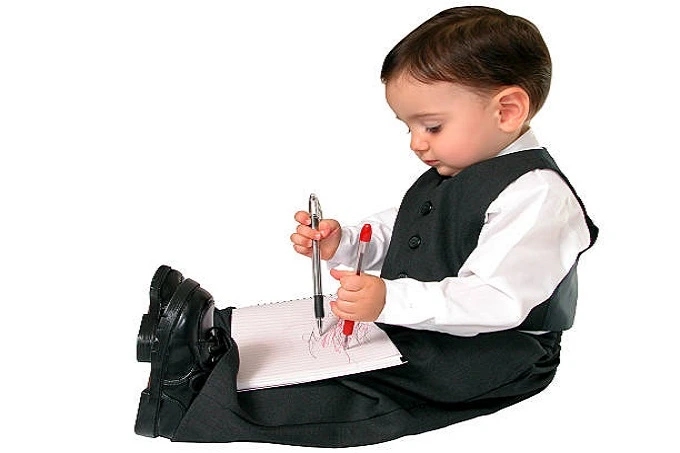6 interesting facts about Ambidextrous

Those ambidextrous are capable of writing and performing with either hand equally effectively. The percentage of people who possess such talent is less than one percent. Our topic examines how ambidextrous persons are distinct from left-handed and right-handed individuals, as well as the impact that having access to both hands has on their daily lives.
1. The condition has benefits in the arts and athletics

Ambidextrous individuals are most suited for careers in creative and athletic fields, such as tennis players, soccer players, artists, musicians, and other creative and athletic occupations. This is because cognitive activities are far more challenging for them, necessitating a greater degree of diligence and perseverance.
Ambidextrous people often excel in various endeavors, including athletics, creative endeavors, and other creative endeavors. Leonardo da Vinci, an artist from the Renaissance period, and Rafael Nadal, a tennis player from Spain, are just a few examples of notable people who could use both hands simultaneously.
2. Ambidextrousness and cross-dominance are not the same things
These two ideas are not interchangeable because of their important distinctions.
Cross-dominance refers to the practice of a person performing different tasks with different hands. For instance, he writes with his right hand, yet he favors using his left hand to pick up cups and other objects. Because in this state, one of the hands must continue to take the initiative, the trait cannot be described as ambidextrous.
3. This condition significantly increases one’s likelihood of developing schizophrenia
Ambidextrous people have a higher chance of getting schizophrenia than people who are either left-handed or right-handed.
Researchers from the University of Queensland in Australia found 48 genetic variations influencing whether a person is right-handed, left-handed, or ambidextrous.
And one of them was the LRRTM gene, which, in addition to perhaps being a factor in left-handedness, has been linked to an increased risk of developing schizophrenia in a person. In addition, the gene in question is almost always present in ambidextrous individuals.
4. There is something unique about the way the brain works

In general, the left hemisphere of the brain is more dominant in left-handed people, whereas the right hemisphere is more dominant in right-handed people. However, there are times when this is not the case.
Left-handed or ambidextrous people have more symmetrical activity patterns on both sides of their brains than right-handed people. Because they do not have a hemisphere that is more dominant than the other, they have this uniqueness.
By the way, people with synaesthesia, a rare psychological phenomenon in which a person combines sensations from several senses, have a brain that works the same way as people without synaesthesia. Ambidextrous people are found in quite a few of these groups.
5. Don’t try to become ambidextrous because it’s impossible
It is possible to become ambidextrous, even if you were not born with that ability; all you need to do is practice writing and other activities with your non-leading hand.
Some believe improving their ability to use both hands effectively can boost their brain function. Unfortuitously, however, there is little scientific evidence to support the claims that such training is beneficial.
In addition, it is a fallacy to believe that the brain hemisphere that works less with the dominant hand does not develop or work at all. This is not the case. The right and left halves of a person’s brain collaborate to produce any behavior or response exhibited by a human being.
In addition, a study conducted in 1998 by a British scientist revealed that ambidexterity might be connected to lower academic achievement and poorer mental health. According to the study’s findings, ambidextrous individuals had worse performance on mathematical reasoning, memory, and logic tasks.
Michael Corballis, a cognitive scientist from the United States, has proposed the following as a possible explanation for these findings:
Asymmetries in the brain presumably arose to facilitate the division of labor between the two halves of the brain. Attempting to erase or alter this productive setting could result in psychological and cognitive issues if it is not done carefully.
Unfortunately, however, experts have not yet determined how accurate such problems can be in both people who are born ambidextrous and those who have learned to be ambidextrous through practice.
6. Ambidexterity may raise the risk of ADHD in children and adolescents

Children and teenagers frequently suffer from a condition known as attention deficit hyperactivity disorder (ADHD). In addition, ambidexterity may increase the likelihood that it will take place.
In 2010, researchers from the UK came to this understanding after doing their research. They analyzed the reports that were submitted by teachers, psychologists, and parents who indicated speech and other issues in children who were ambidextrous and right-handed.
Compared with right-handed children, those who could use both hands well had twice the risk of developing speech issues by the age of eight, according to the research.
And by the age of 16, the same adolescents had a twofold increased risk of having speech issues and ADHD symptoms. In order to determine this, specialized interviews and physical examinations were conducted with each of them.




